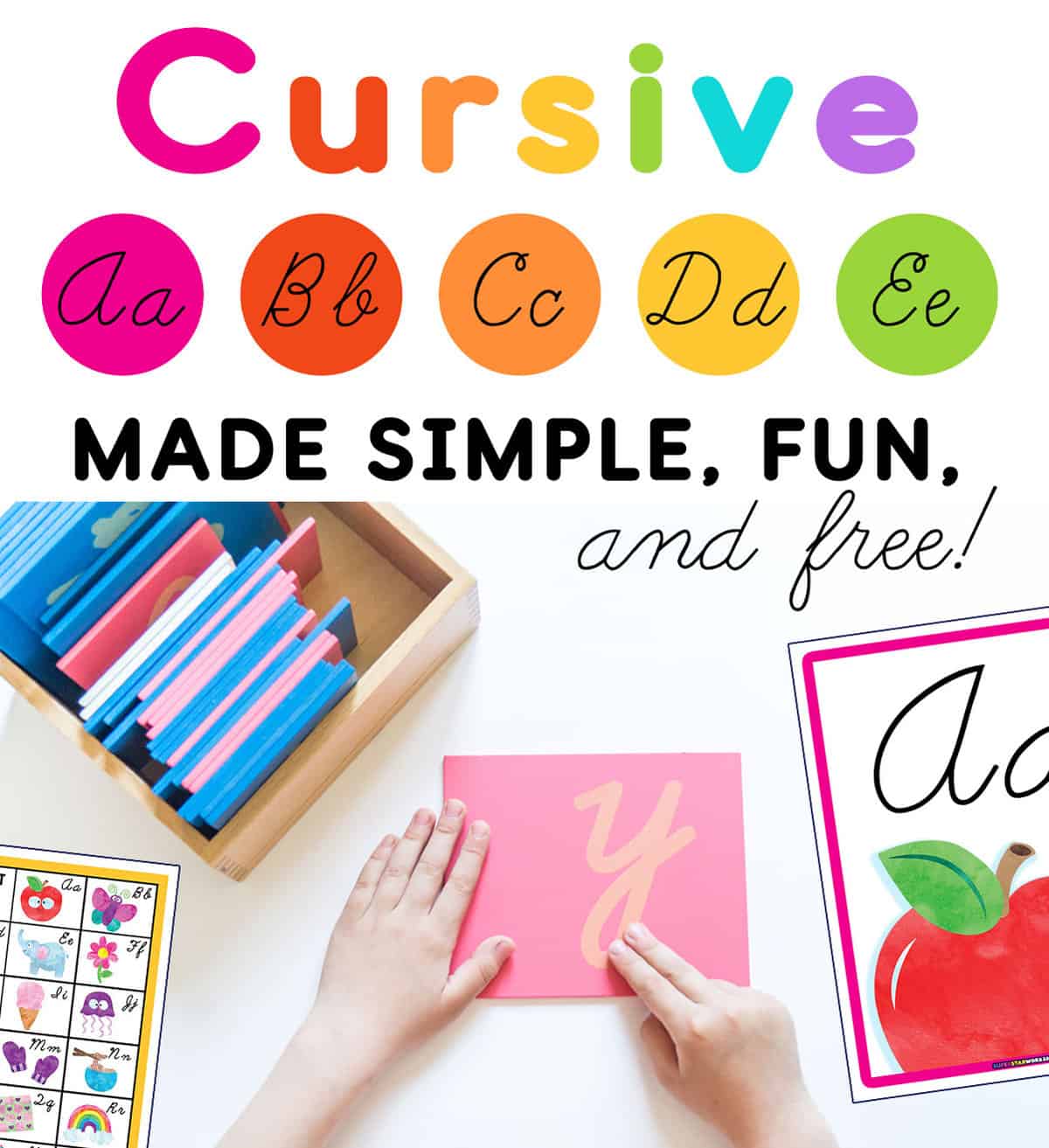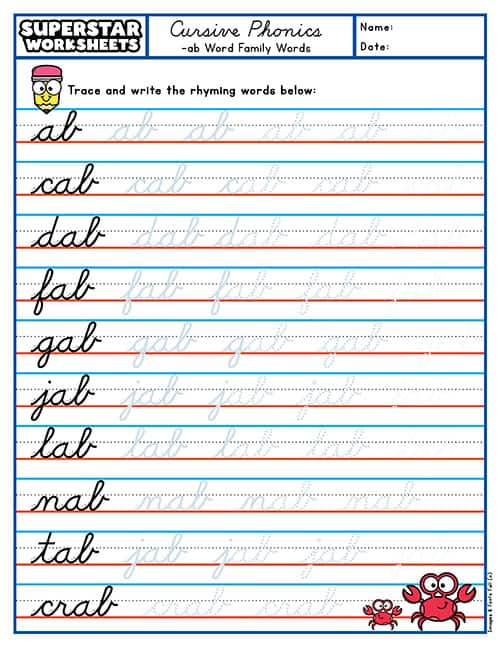

Teaching your students to read and write cursive is fun with our free cursive printables and teaching resources. You’ll find cursive alphabet charts, cursive letter formation and stroke order, cursive worksheets, cursive tracing, flashcards, task cards and more! Plus, helpful tips so you can teach your students cursive with ease. Not sure if your students are ready for cursive? Try our Pencil Control Bundle for easy and fun fine motor skills prep work.

Free cursive alphabet printables, charts, worksheets, flashcards, and more for every letter of the alphabet! Students learn to read and write cursive uppercase and lowercase letters


Free printables and teaching resources for students learning to read and write in cursive. We’ve created simple activity pages you can use to help your students master cursive. From Cursive Alphabet worksheets, to the planets in the solar system, these printable cursive writing worksheets will provide tons of extra practice. If your students need extra fine motor control practice, try our free path tracing worksheets to show students the continuous movement of the pencil from left to right.

FREE Cursive Writing worksheets for elementary students. This is a set of cursive printables for students to write in cursive for the entire alphabet. Third-grade and fourth-grade students can learn how to write in cursive immediately with this set of 26 letters. Children will also exercise their fine motor writing skills when tracing each cursive letter.

Elevate your elementary students’ writing skills with our free traceable cursive printables! Children will learn how to write the individual letters as well as how to connect the letters seamlessly.

This set of cursive writing worksheets is the perfect introduction to cursive letters. Students are given larger writing lines and extra space between each letter. Both uppercase and lowercase letters are provided and the dashed lines are consistent over the sheet.

This set of Cursive letter alphabet worksheets will help your students practice cursive handwriting for uppercase and lowercase letters. Featuring simple to-follow stroke order instructions, and gradually disappearing dashed tracing lines, this set is sure to build cursive handwriting confidence.

These are printable cursive practice pages specifically made for third-grade and 4th-grade students to practice their cursive penmanship. These cursive writing pages provide students with uppercase and lowercase letter practice while supporting them with stroke order. Handwriting worksheet pages make learning cursive fun and engaging, but you may want a little more for your students.

Students work on spelling and cursive handwriting with this simple set of Cursive Days of the Week Handwriting Pages. Each page features a single day with gradually decreasing lines to build extra confidence with writing. All 7 days are available Sunday through Saturday.

After learning the days of the week, challenge your students to read, write, and spell the 12 months of the year in cursive! Each page provides simple visual instruction on pencil movement January through December.

Add some science into your ELA time with our free printable cursive worksheets for all the planets int the solar system. Each planet is depicted with easy coloring lines so these can be added into science notebooks as well.

(coming soon) This set of cursive phonics worksheets will have your students learning word families and rhyming words as they practice connecting cursive letters to form words. This activity is super for spelling and reading practice!

Cursive handwriting instruction is usually taught during the 2nd or 3rd-grade year. You might remember your own 2nd-grade classroom with the cursive alphabet border all along the classroom walls. Once students have a firm grasp on letter recognition of uppercase and lowercase letters, as well as beginning and early reading skills, they can handle reading and writing cursive letters. If you are looking for an amazing pre-handwriting program to prep your students for cursive try our Pencil Control Bundle.


With all the different styles of cursive writing and teaching fonts available, you might be wondering which to choose! If you are serious about your cursive font needs, you can check out Educational Fontware, for a paid district, or homeschool license. These cursive fonts include helpful style connections you can make to your child’s specific curriculum. For example, you’ll find fonts in the style of Bob Jones University (R), Abeka (TM) Cursive First (R), Zanser Bloser (R) D’Nealian, Montssori and more!
In the past, we’ve also created cursive teaching resources use the amazing cursive fonts from Font4Teachers. These are much less expensive to purchase and were chosen because of the traditional font styles for the letters F, Q, T, as well as the forward-slanted style of writing. They also offer variations of dotted letters, handwriting lines and stroke order. There are many other cursive teaching fonts available online that you can use with your students depending on your needs. Here are some modern cursive fonts, D’Nealian Cursive fonts, and even a Handwriting Without Tears Cursive font if you are using the HTW program.

Many school fonts contain previews so you can view the uppercase and lowercase letters. When choosing a cursive font for educational purposes, be sure to check that the connecting lines are smooth and appropriate (high or low connections) and that individual letters provide good starting lines. This is one difficulty we came across when using lower-cost cursive fonts– the initial starting letter doesn’t start at the baseline—I guess you can’t have it all! If you have a cursive font suggestion let us know in the comments below!